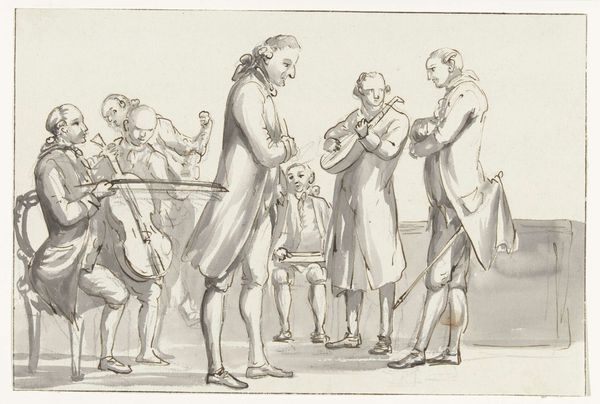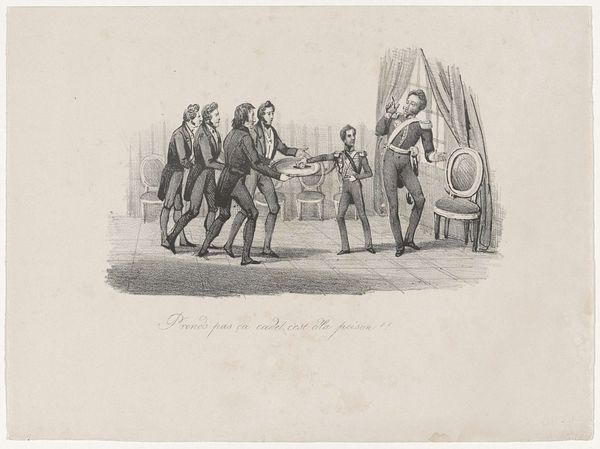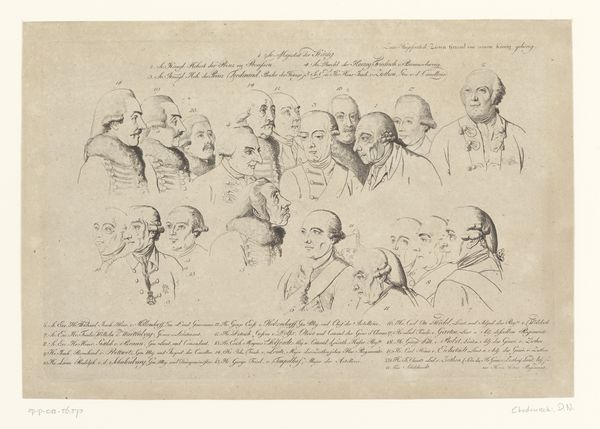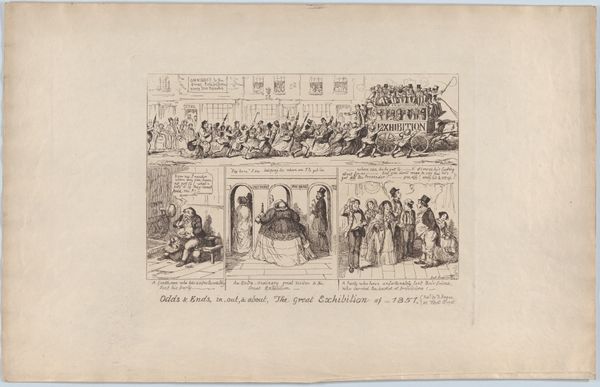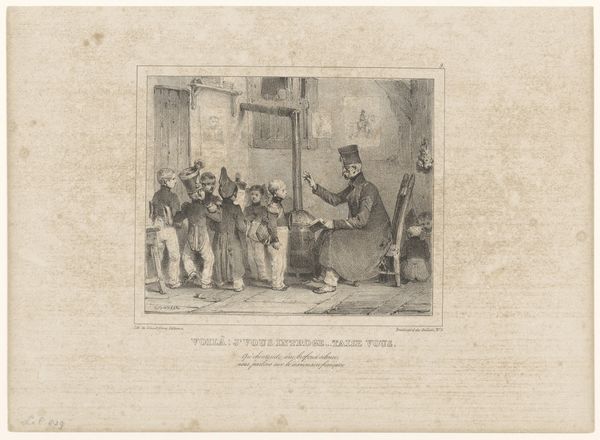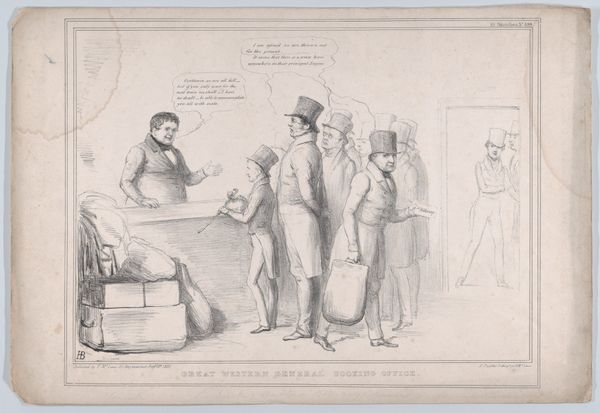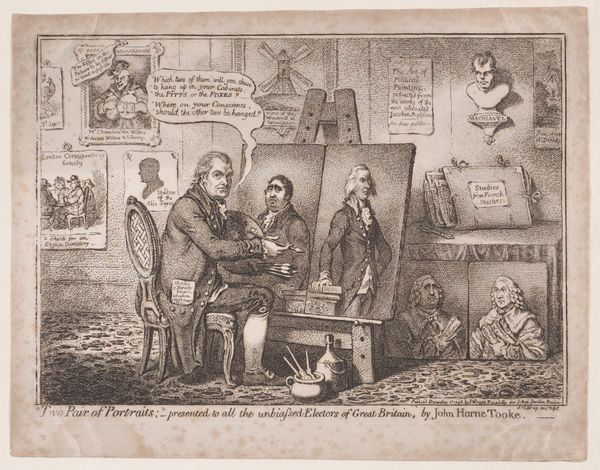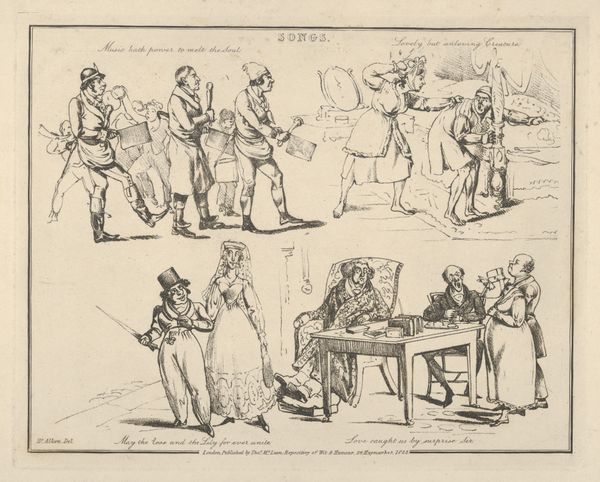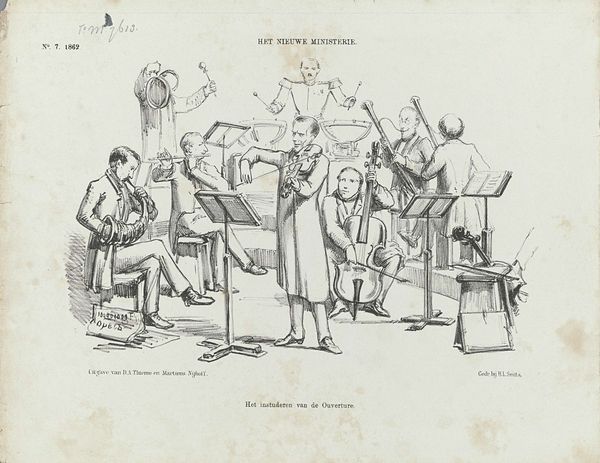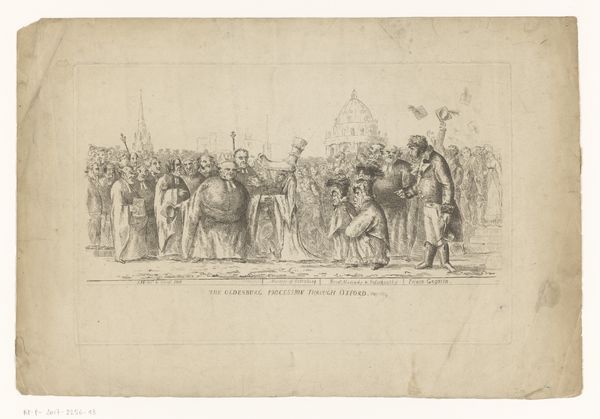
drawing, print, pencil
#
portrait
#
drawing
#
narrative-art
# print
#
figuration
#
coloured pencil
#
romanticism
#
pencil
#
watercolour illustration
#
history-painting
Dimensions: Sheet: 11 13/16 × 17 5/16 in. (30 × 44 cm)
Copyright: Public Domain
Curator: This drawing by John Doyle, created in 1838, is titled "Ancient Concerts – A Rehearsal," and it resides here at the Met. What are your immediate impressions? Editor: It's predominantly grayscale, almost ghostly, but the scene is lively, populated by many figures arranged around instruments and music stands. It gives a sense of movement even in its static form, perhaps suggestive of sound? Curator: It does convey a specific mood and narrative. Doyle was deeply engaged in social commentary, often using his art to critique the politics and social customs of his time. "Ancient Concerts" reflects on the formal gatherings of musicians. Who were these players? How did gender and class shape such an assembly? These spaces dictated societal expectations. Editor: I'm particularly struck by the arrangement of these figures in the pictorial space, the repetition of shapes – the curve of the instruments, the tilt of their heads toward the conductor. It is a unified yet informal grouping of similar figures who draw my eye toward the sheet music displayed on stands around the ensemble. What’s also striking is that a good number of the musicians are backgrounded in the scene almost in sketch-like fashion. Curator: Exactly! The ghostly rendering reinforces the idea of rigid societal expectations. These concerts weren’t simply about music, but about social performance and hierarchies. Who was included, who was excluded and whose labour goes unrecognized? What sort of coded language was embedded in such gatherings? Editor: The artist's medium – a print made from pencil and watercolor – softens what might otherwise be a stark portrayal. The tonal values almost vibrate which certainly reinforces my first impression of motion, or even controlled chaos as one might observe during the run-through of a challenging movement. Curator: Thinking about it now, Doyle's artwork isn't merely documenting a scene, it is prompting us to question and unpack the intricate social, cultural, and even political undercurrents of musical expression within a particular historical framework. Editor: For me, looking closely reveals the power of simple form – lines, shapes, tone—in the hands of a skillful artist who draws together complex social dynamics with structural composition to elicit feeling and understanding.
Comments
No comments
Be the first to comment and join the conversation on the ultimate creative platform.
